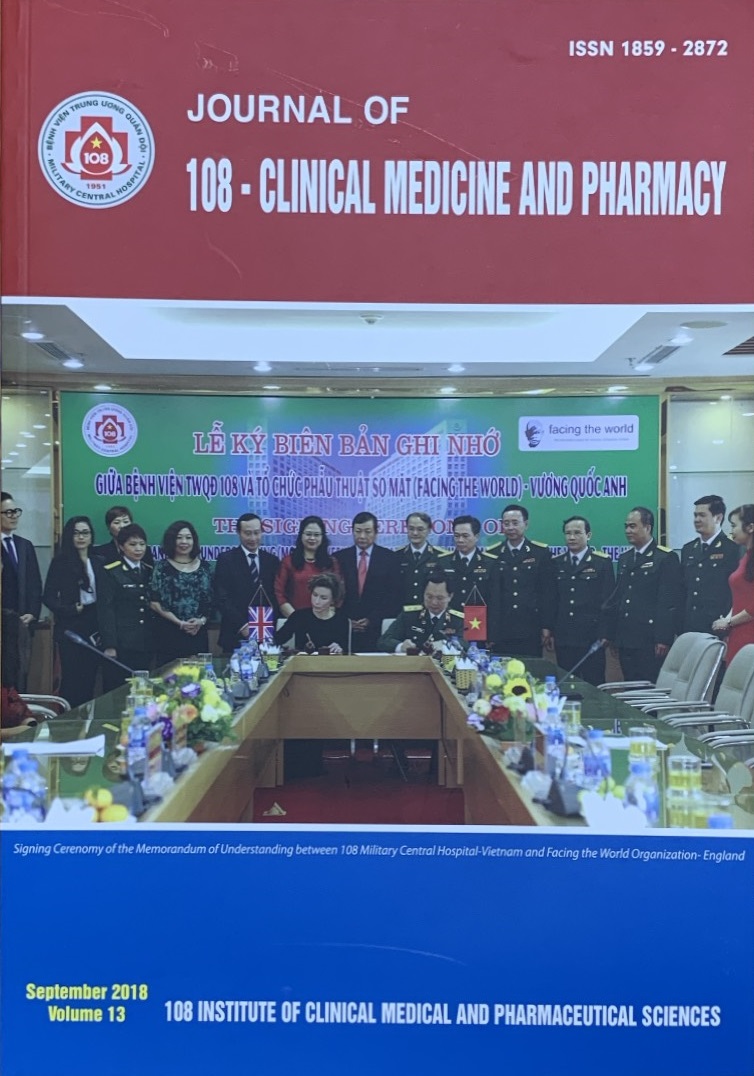Pattern of organ failure and predictors of mortality in septic shock patients in 108 Military Central Hospital
Main Article Content
Abstract
Objective: To describe pattern of multi-organ failure and predictive factors of mortality in septic shock patients with multi-organ failure treated at 108 Military Central Hospital. Subject and method: A prospective cross-sectional study was conducted on 98 septic shock patients with multi-organ failure in 108 Military Central Hospital from 2017 to 2018. These patients fulfilled septic shock criteria according to Survival Sepsis Campaign (SSC) 2016. Diagnosis of multiple organ failure was based on the modified Klaus criteria 2005. Patients were divided into two groups: Survival and death. These two groups were compared to find out some prognostic factors. Result and conclusion: The majority of patients was older than 60, male patients accounted for 66.3%. The common comorbidities in our study were diabetes (35.7%), hypertension (30.6%), cirrhosis (25.5%). The most common organ failures was respiratory (71.4%), followed by kidney (62.9%), liver (57.5%). The higher the number of organ failure, the higher the mortality rate was. The general mortality rate was 63.3%. Three independent predictors of mortality in septic shock patients with multi-organ failure were ARDS, APACHE II > 22, SOFA > 9.
Keywords: Septic shock, multi-organ failure, predictive factors of mortality.
Article Details
References
2. Hoang Thi Hanh (2018) Study predictive factors of mortality in septic shock patients with multi organ failure caused by gram negative bacteria failure treated at 108 Military Central Hospital from 2016 to 2018. Clinical medical and pharmaceutical journal 108: 44-50.
3. Hoang Van Quang, Le Huy Bao (2012) Validation of clinical scores evaluated multi-organ failure as predictors of mortarlity in septic shock patients. Ho Chi Minh Medical University 16(1): 167-173.
4. Andrew Rhodes (2016) Surviving sepsis campaign: international guidelines for management of sepsis and septic shock: 2016. 2017 SCCM and ESICM.
5. Micheals, Pobert K et al (2005) Improving care of the patient with severe sepsis and sepsis shock. Comtemporary Care Medicine 3(5): 1-11.
6. Regel G, Grotz M, Weltner T et al (1996) Pattern of organ failure following severe trauma. World J. Surg (20): 422-429.
7. Marshall B, John C, Cook et al (1995) Multiple organ dysfunction score: a reliable descriptor of a complex clinical outcome. Crit Care Med 23(10): 1638-1652.
8. Elizabeth B, Desanka D, Sanja D et al (2001) Multiple organ failure in septic patients. Razilian journal of infectious diseases, Salvado june 5(3): 1-8.
 ISSN: 1859 - 2872
ISSN: 1859 - 2872
